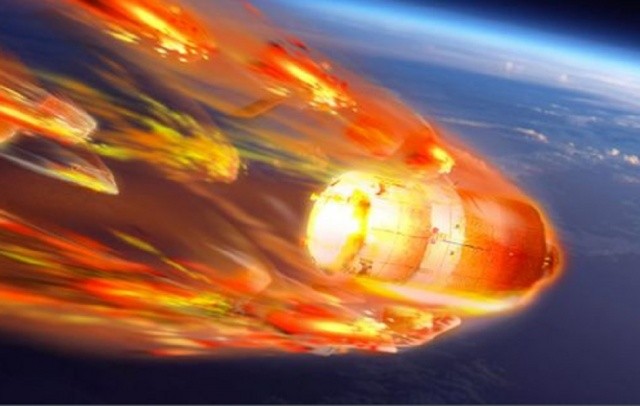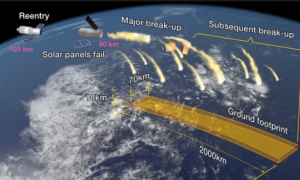China’s first outpost in space came to a fiery end today, making an uncontrolled reentry into the Earth’s atmosphere. The US Joint Force Space Command Component (JFSCC) has confirmed that at about 5:16 pm PDT on April 1 (April 2, 00:16 GMT), the derelict Tiangong-1 space station burned up over the southern Pacific Ocean ending weeks of uncertainty as to when and where it would finish its career.
In a statement, JFSCC said that the now unmanned space lab was tracked by the US Space Surveillance Network and assets of Australia, Canada, France, Germany, Italy, Japan, South Korea, and the United Kingdom. However, the agency stressed that it did not track or predict the fall of debris from the spacecraft after it burned up.
Tiangong-1 was launched on September 30, 2011 from the Jiuquan Satellite Launch Center, China, atop a Long March 2F/G rocket and was China’s first space station. Designed to accommodate two astronauts, it was visited in 2012 by the three-astronaut Shenzhou 9 mission that included China’s first female astronaut, and in 2013 by Shenzhou 10.
In March 2016, the Chinese National Space Administration lost telemetry contact with the station and was unable to correct its orbit or send it into the atmosphere in a controlled reentry. Now a lifeless mass of metal, Tiangong-1’s orbit decayed over the next two years, but due to the variables involved in the calculations, where and when it would return to Earth was unknown until a few hours before impact.
Since Tiangong-1 weighs 8.5 tonnes, it’s possible that as much as 20 percent of it could have reached the Earth’s surface, but since it broke up over an area that is almost entirely ocean, the odds of this causing any harm are very remote.
Source: newatlas





































